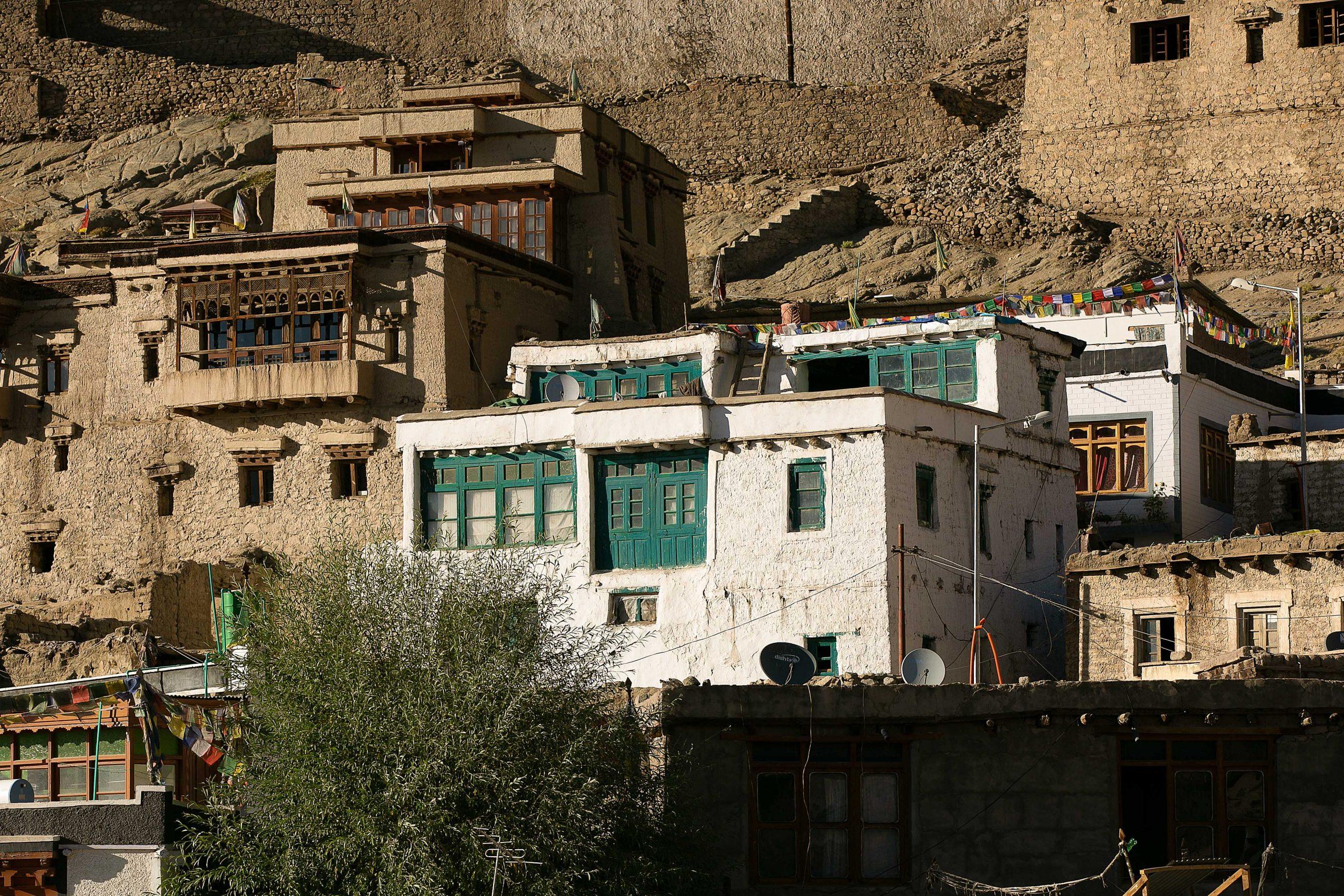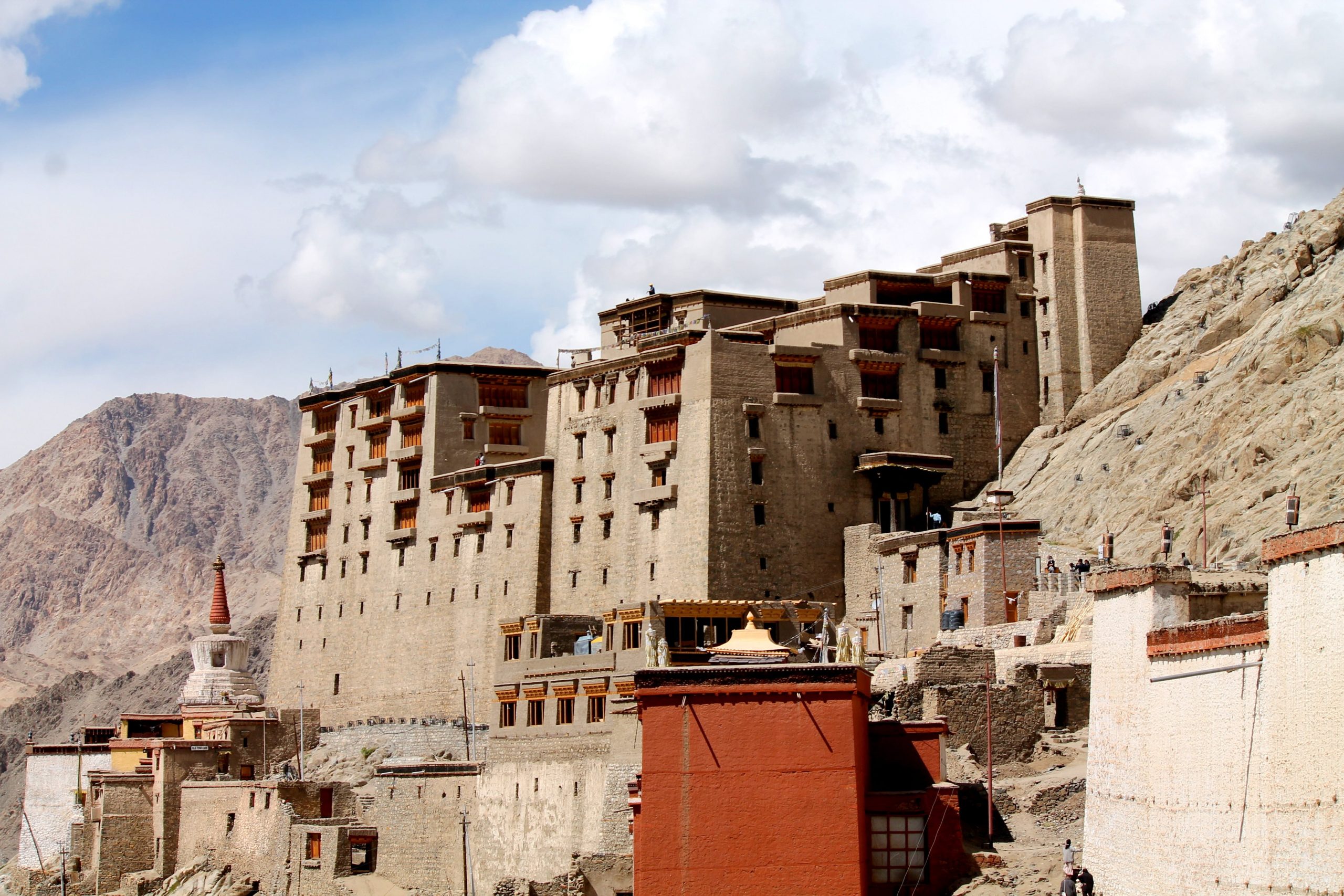In the midst of a raging Indian monsoon in the mountains, the thunderous crash of torrential rain hitting the tin roof is a sharper memory in my mind than the soft pitter-patter that it is often romanticised to be. In a bid to escape the rains in Uttarakhand, I always try to find trails where I can chase sunshine rather than the monsoon. In 2010, I found my answer in the trans-Himalayan region — particularly in the city of Leh — that lies in the rain shadow area of the mighty mountain range, where the roofs are flat and made of wood and mud, and where the season’s showers were known to be replaced by a cascade of eternal sunshine. I’ve become a regular visitor of Leh now, and have explored it in nearly all seasons around the year, including the snow-bound winter when the temperatures can plummet to as low as -15ºC.
In recent years, however, increased rains due to the climate crisis have not spared this sacred area. In response to this, the structure of the roofs has changed over time — often by including concrete — to prevent damage from water. While some houses couple traditional designs and modern techniques, others have had to replace the traditional flat roofs with concrete or sloping ones to prevent the water from seeping in. Traditional homes here have flat roofs that are built to bear the overwhelming weight of the snow. Local environmentalist Sonam Jorgyes tells me that the typical Ladakhi roof is designed to keep the house warm, and is made with wood from two kinds of trees — poplar and willow — mainly used for timber production in the region. Above the poplar tree beams or dungma are willow tree branches and twigs, laid perpendicular. A stopgap layer of a local grass called yagtsez follows, which insulates the house, and also works as a layer to absorb any moisture that may seep through the layer above. The final layer — placed as protection from snow and its moisture — is usually a mix of mud and clay, sometimes coupled with straw and animal dung.
Ladakhi roofs were not designed to withstand the damage from rainwater that slowly ingresses through the walls. The collected rainwater percolates down, which not only dampens the roof, but also freezes and expands as the degrees drop, leading to cracks in the walls, eventually resulting in the weakening of the structure. Sonam informs me that the volume is what makes all the difference — snow melts at a slow pace and the damage done is negligible. He also points out that waterproofing remains a real challenge: “Many homes have now started adding a layer of plastic sheet over the layer of yagtsez, as the grass itself is no more enough to combat moisture.”
The decline in the presence of flat roofs is more than an architectural loss — often, people would also use them to store and dry grass and straw. Traditional roofs also served as places for social gatherings, and with their phasing out, there is a larger loss of this cultural practice. “Whether it was for discussions on local issues such as water shortage, or a tea party and celebration, or something as simple as bonhomie over the activity of storing grass, the roof was the epicentre of social bonds during the day, just like the kitchen and hearth at night,” says Sunil Chauhan, a social entrepreneur who has spent nearly 20 years in the trans-Himalayan regions, particularly in the Spiti valley between 2004 and 2014.
Outside of Leh, in villages like Tar, which are still not connected by road, dungma and heaps of yagtsez continue to crown homes. From the monastery at the top of the village, Tar Gompa, I get a bird’s eye view of the village, and I see these traditional rooftops in all their glory. I am uncertain about the future of the last of these keepers of heritage, but I do hope that someday, with the return of architecture in which the old meets the new, the roof comes full circle to become the centre of good times once again.
Our selection of stays across India, best visited for their design and style. Check in
Shikha Tripathi was born and brought up in the Himalayas, and writes on various topics like culture, ecology, sustainability, and the mountains. She is on Instagram at @shikha_trip.








